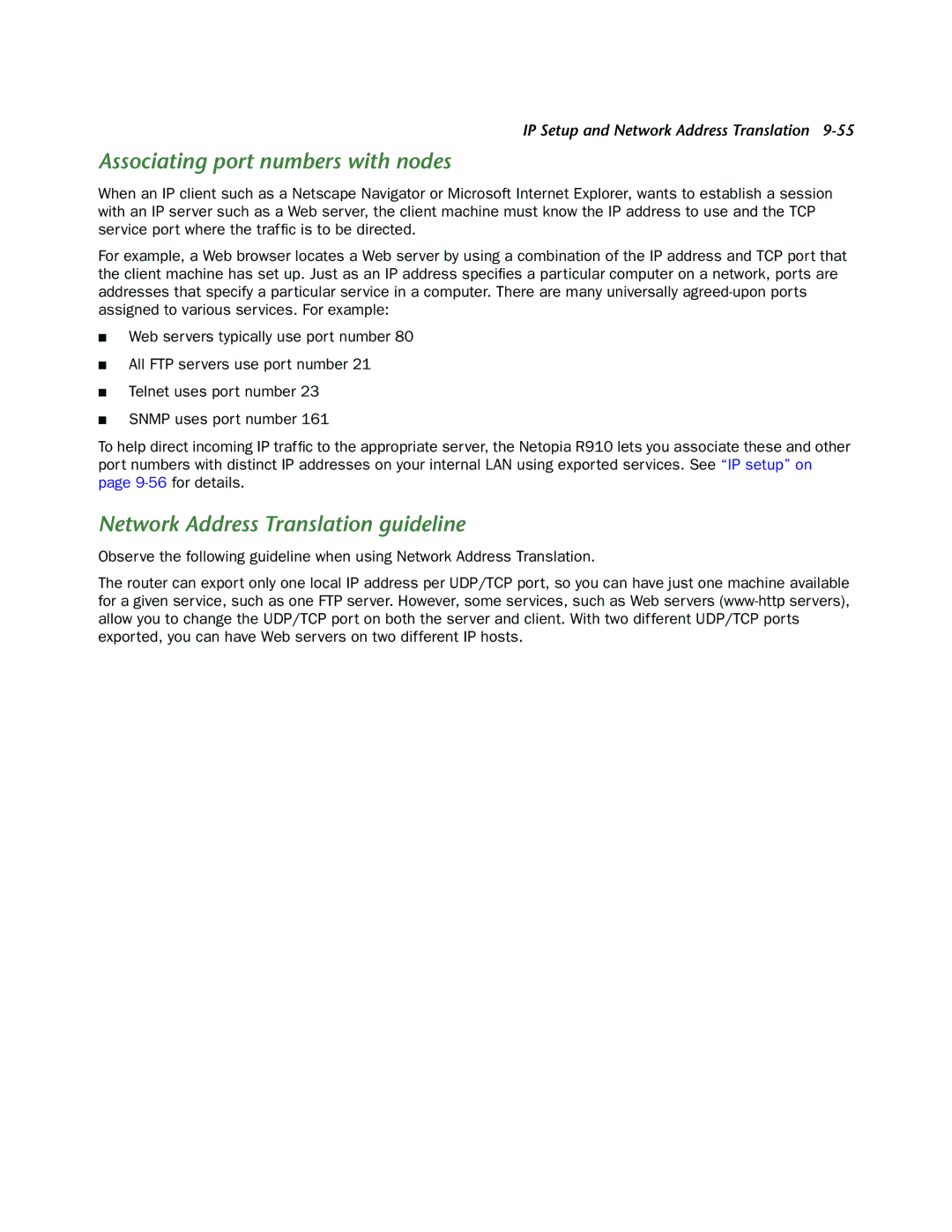IP Setup and Network Address Translation
Associating port numbers with nodes
When an IP client such as a Netscape Navigator or Microsoft Internet Explorer, wants to establish a session with an IP server such as a Web server, the client machine must know the IP address to use and the TCP service port where the traffic is to be directed.
For example, a Web browser locates a Web server by using a combination of the IP address and TCP port that the client machine has set up. Just as an IP address specifies a particular computer on a network, ports are addresses that specify a particular service in a computer. There are many universally
■Web servers typically use port number 80
■All FTP servers use port number 21
■Telnet uses port number 23
■SNMP uses port number 161
To help direct incoming IP traffic to the appropriate server, the Netopia R910 lets you associate these and other port numbers with distinct IP addresses on your internal LAN using exported services. See “IP setup” on page
Network Address Translation guideline
Observe the following guideline when using Network Address Translation.
The router can export only one local IP address per UDP/TCP port, so you can have just one machine available for a given service, such as one FTP server. However, some services, such as Web servers
